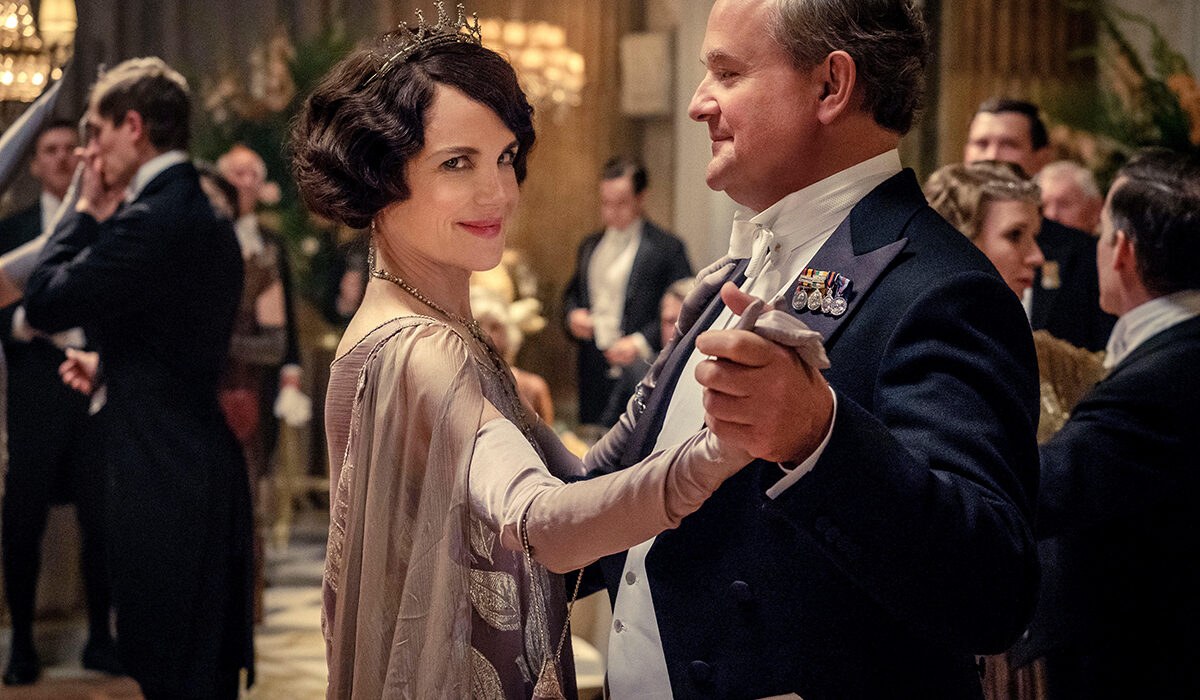In the first episode of the hit TV series “Downton Abbey,” Lady Cora Crawley gently reminds her husband of the dowry she, an American heiress, brought when she left Cincinnati to marry him and relocate to rural Yorkshire. Her fortune saved the Abbey and Earl Grantham’s family from ruin.
“Downton Abbey” and a BBC miniseries based on Edith Wharton’s novel “The Buccaneers” inspired Olin Dean Mark P. Taylor to examine a historical trend: In the four decades before the outbreak of World War I, 100 daughters of American business magnates married titled members of the British aristocracy.
“Given that British aristocracy was generally regarded as the most exclusive club in the world outside of the British royal family, this is a remarkable phenomenon,” said Taylor, who is British.

Taylor’s research premise is that the rapid decline in British agricultural prices — which shrank not only the income of aristocratic landed estates, but also the income of common families who owned land — led to a significant proportion of male aristocrats marrying American heiresses. American brides with rich dowries were substituted for brides from the traditional source: British families who had no aristocratic titles but did have land.
In “Peers, Buccaneers and Downton Abbey: An economic analysis of 19th century British aristocratic marriages,” published in the August edition of Economic Letters, Taylor provides empirical data analysis supportive of his thesis.
“This is what a year of watching TV does to an academic,” Taylor joked, referring to months of quarantining because of the pandemic.
In Britain, agricultural prices dropped because of the opening up of the American prairies, development of U.S. railroads and the advent of steamships — “all of which led to the flooding of the U.K. market with cheap prairie wheat,” Taylor said.
Meanwhile in the U.S., high society shunned the families of wealthy businessmen. “East Coast high society was the jealously guarded preserve of families who could trace their ancestry back to the earliest Dutch or English settlers and who socially ostracized the nouveau riche business magnates and their families,” Taylor writes.
So what were the daughters to do? Marry into the British aristocracy. Their mothers, in particular, set their sights on marrying their daughters into British nobility as a means of establishing social pedigree — at whatever the cost.
The whole trend, Taylor said, likely started with the 1874 marriage of Jennie Jerome, the daughter of New York financier Leonard Jerome, and a son of the 7th Duke of Marlborough, Lord Randolph Churchill — a union that produced Winston Churchill. Leonard Jerome settled a dowry of £50,000 on the marriage, which is about $6.5 million today.
“This is what a year of watching TV does to an academic.”
Dean Mark P. Taylor (joking)
Two years later, Consuelo Yznaga, the daughter of Antonio Yznaga, who had made his fortune in West Indian sugar plantations before relocating to Newport, Rhode Island, married the heir to the Duke of Manchester, “thereby proving that the very highest social rank below royalty was not beyond the scope of the daughter of an American business family,” Taylor writes. The dowry settlement was £200,000, or about $26 million today.
“Perhaps the most celebrated (or notorious) American-aristocratic marriage of the period, however, took place at the height of the trend in 1895,” Taylor writes. The family of the American railroad magnate William K. Vanderbilt became allied to one of the most prestigious British aristocratic families when his daughter, Consuelo, married the 9th Duke of Marlborough. The dowry settlement was $2.5 million — about $82 million today. The money restored the family fortunes and restored the palatial Marlborough ancestral seat of Blenheim Palace in Oxfordshire.
Marriages to American heiresses were part of a wider, less pronounced, phenomenon whereby non-American foreign brides also were substituted for British exogamous brides with land during much of the 19th century when agricultural prices declined.
In addition, Taylor finds significant evidence of substitution for landed brides with British business family brides for the whole of the 18th and 19th centuries, which was less marked than the rate of admission for foreign brides but which increased over the course of those centuries.
In a time of agricultural decline, cash restraints may be imposed on lump-sum transfers from landed families, “allowing unlanded but nevertheless rich families to offer higher lump-sum transfers in order to compensate for the lower level of prestige associated with non-landholders,” he writes, “a phenomenon which may perhaps be aptly termed the Downton Abbey Effect.”
(For “Downton Abbey” fans, the sequel film will be in theaters in March 2022.)



